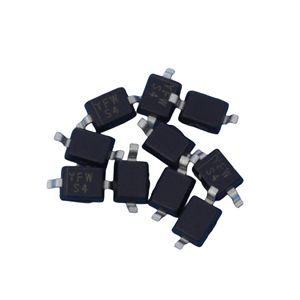Date:2024-10-11 Categories:Product knowledge Hits:294 From:Guangdong Youfeng Microelectronics Co., Ltd
The operation of rectifier diodes may not be well understood by many people. It is a diode device that converts alternating current energy into direct current energy. Usually it contains a PN junction with two terminals, anode and cathode.
The carriers in the P region are holes, while the carriers in the N region are electrons, forming a certain potential barrier between the P and N regions. When a positive voltage is applied to the P region relative to the N region, the potential barrier decreases, and stored carriers are generated near both sides of the potential barrier, which can pass through high currents and have a low voltage drop (typically 0.7V), known as forward conduction state.
If the opposite voltage is applied to increase the barrier, it can withstand high reverse voltage and flow a small reverse current (called reverse leakage current), which is called reverse blocking state. Rectifiers have obvious unidirectional conductivity.
Rectifiers can be made of materials such as semiconductor germanium or silicon. Silicon rectifier diodes have high breakdown voltage, low reverse leakage current, and good high-temperature performance. Usually, high-voltage and high-power rectifier diodes are made of high-purity single crystal silicon. This type of device has a large junction area and can pass large currents (up to thousands of amperes), but its operating frequency is not high, generally below tens of kilohertz. Rectifiers are mainly used in various low-frequency rectification circuits.
So, compared to the widely used rectifier diode, its role is actually very significant.

Previous: Classification, Structure, and Principle of MOSFET
Next: Using voltage inspection method to quickly locate fault points in integrated circuits